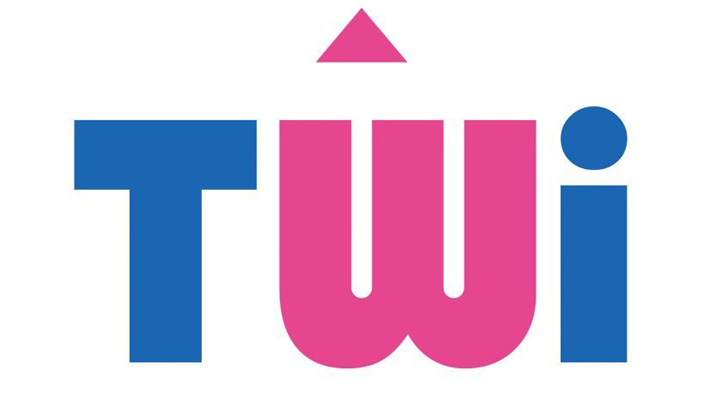Does localisation matter?
In a global market dominated by the English language, are specialist translation services like software localisation, website translation, and transcreation still relevant?
The evidence shows that they are.
Over 20% of the world’s population speak English. Of those, nearly 380 million people are native speakers. Many millions more speak English as a second or third language.
If so many people speak English, is translating and adapting your content to the language and culture of local markets really that important?
A recent report by the language industry watchdog CSA Research examined the language preferences of consumers across 29 countries. Their research found that 76% of online shoppers prefer to buy from websites that provide information in their own language, while 40% would never buy from a website that was not in their own language.
English may be the dominant language of global e-commerce, but one size clearly does not fit all. Pitching a product or service to an international market dominated by local competitors can be challenging, but specialist translation services like software localisation, transcreation, and website translation will help to level the playing field. By establishing the credibility of your brand and instilling trust in what you have to offer, these services are key to creating an authentic customer experience that really speaks to the language and culture of your target market.
What is Software Localisation?
Translation involves converting meaning from one language to another based on accepted grammar rules. Localisation goes one step further by adapting that translated content to the country-specific standards and culture of your target market. The goal is to ensure that your localised software has the same look and feel as any other home-grown software competing in that market. Localisation takes into account factors such as:
- Currencies and units of measure
- Visuals and graphics
- Variables and placeholders
- Date, time, and address formats
- Regulatory requirements
Localisation includes the translation and adaptation of supporting user documentation. This can include classic user guides, online knowledge base articles, or dynamic in-context help. The goal is to ensure that international users have all the information they need to make best use of the software. User experience is improved when software options are referenced consistently. For example, if a French-speaking user is asked to click on a menu in their version of the software, the name of that menu must be the same one referenced on the translated help page. If the menu is titled Annuler (“Cancel”) but the help topic refers to Désabonner (“Unsubscribe”), our French user may not be able to find the right option and will end up feeling lost and frustrated. Professional software localisation focuses on fundamental considerations such as these to ensure that all users are on the same page, regardless of locale.
The word “localisation” itself is a good example. TWi is based in county Cork, in the south of Ireland, but we deliver content to customers all over the world. Because we’re based in Ireland, you may think we would use “localisation”, but the data shows that “localization” is now by far the more prevalent form on both sides of the Atlantic. This is partially due to the cultural influence of the United States, but the “iz” spelling is also considered correct by, for example, the Oxford English Dictionary. In an ironic twist of fate, localisation is on the road to localizing itself out of existence (if you’d like to know more about how and why, you can read this post).
What is Transcreation?
Transcreation is an amalgamation of the words “translation” and “creation”. It is the process of adapting creative content from one language to another. Where translation focuses on words, transcreation focuses on sentiment. A marketing message that has been perfectly crafted for one market may not trigger exactly the same response in a different market. Transcreation takes the emotional intent behind the original concept and conveys it in a different way to produce the same impact in the target market. “Crossing the Rubicon”, like we did a moment ago, may mean little to a reader who speaks Japanese, Swahili, or Arabic.
Transcreation could have saved Microsoft money and embarrassment when they launched Bing for the Chinese market. The software giants opted for straight translation when they rolled out their search engine in China, but ignored transcreation. They overlooked the importance of local language and culture and launched the search engine using its English name, which translates into Chinese as “disease”. Transcreation will always be relevant for high-visibility marketing content that needs to be conveyed in a way that is credible, engaging, and true to your core brand, but which identifies and avoids such embarrassing faux pas.
Why Website Translation is Still Important
As more and more businesses move online, website translation is one of the most efficient ways to open doors to new markets. Web translation involves more than simply translating the content of individual web pages – it’s about creating a tailored experience that resonates with the target market, making it easier for customers to progress along the buyer’s journey. The most effective way to achieve this is through international search engine optimisation (SEO). To increase the visibility of your translated website and improve your ranking in local search engine results, it is crucial to get your keywords right.
Every language has evolved to meet specific needs and express certain concepts. This means that word-for-word translation is rarely a viable option. This is especially true in the case of multilingual SEO keywords. To really get your multilingual keywords working for you, you need more than just translation skills – you need to get into the mindset of your customers in each specific market in order to predict and understand their search behaviour. Once you understand what makes your customers tick, you can use their search patterns to inform your choice of keywords and drive traffic to your website.
The Cultural Component of Localization
The drive to speak to customers in their local language doesn’t just apply to languages like Chinese, Korean, or German. It also applies to variants of the English language, such as UK English, US English, Canadian English, Australian English, and so on.
Beyond obvious terminology differences, variants of English diverge significantly in their use of grammar, punctuation, and of course spelling. Localizing your content to meet the needs of customers in different English-speaking regions of the world is not just a question of language; it’s also a question of culture. The only way to truly reflect the nuances of a country’s culture is to work with native-speaking translators.
The importance of using professional native-speaking translators became a hot topic on social media in 2020 when it was revealed that the Scots version of Wikipedia had been “translated” by someone with no real knowledge of Scots. The results were hilarious but also prompted extensive rework by hundreds of Scots-speaking volunteers to correct years’ worth of mistranslated articles. However, the translators are unable to change the thousands of references made to the mis-translations on other websites or in numerous related articles. These will continue to damage efforts to promote and expand the recognition and use of Scots.
Cultural References Don’t Translate
We’ve all heard the anecdotes about cultural references that don’t translate, even between English speakers. For example, an English person might blush if you asked to see their pants, but an American would probably just point to their trousers. Neither would understand if an Australian proudly told them that he loves wearing thongs. All three would be left scratching their heads if a South African moaned about getting stuck at the red robots*. While it’s tempting to believe that English is English wherever you go, any native English speaker will know this isn’t the case. Research has shown that even subtle language variations in marketing copy can have a big impact on people’s perceptions and attitudes towards a brand.
This cultural variation is why so many multinational organisations, from giants like Google to more niche companies like GoPro, continue to localize their content for different English-speaking markets. Rather than risk confusing their customers with unfamiliar slang, irritating them with seemingly incorrect grammar, or even causing outright offence, these successful global companies understand the value of local adaptation in reinforcing brand perception and driving revenue in international markets.
The Changing Role of Localization
Whether it’s AI headsets, virtual assistants, or talking fridges, emerging technologies continue to transform the way we communicate, in every language.
Information 4.0 has already had a big impact on the way content is structured, delivered, and consumed. This in turn has had a big impact on the role of localisation. There is now less emphasis on translating large chunks of single-purpose text and more focus on translating micro content that can be easily repurposed and accessed in different contexts. In parallel, the importance of translation memories is giving way to the seductive pull of machine translation.
Expertise in machine translation, micro content, and DITA will ensure the continued relevance of localization in the years to come. However, to really capitalise on the benefits of industry trends like single sourcing, it’s important to break down the silos that currently exist between different elements of the global content creation chain. One way of achieving this for technical writing and localization is to ensure that content is written in a way that facilitates good-quality output from machine translation. A focus on structured syntax, consistent terminology, and clear and concise language can help produce high-quality, localization-ready content.
Whether it’s structured, unstructured, single-source or DITA-driven, the face of content is changing. The role of localization is changing too. To keep pace with this rapidly-evolving landscape, and better still, to pre-empt the language needs of emerging technologies, localization must become more agile, flexible, and responsive than ever before. As long as there is a need to cross language and cultural barriers in global communication, there will be a need for professional translation and localization.
One size will never fit all, especially when it comes to language. It will always be important to create a personalized customer experience that demonstrates to your international customers that you value their business.
*The English person thought you were asking to see his underwear, the Australian was just talking about his sandals, and the South African was stuck at the traffic lights.
Images Used
- Image by CHUTTERSNAP, licensed by Unsplash
- Image by JESHOOTS, licensed by Unsplash











